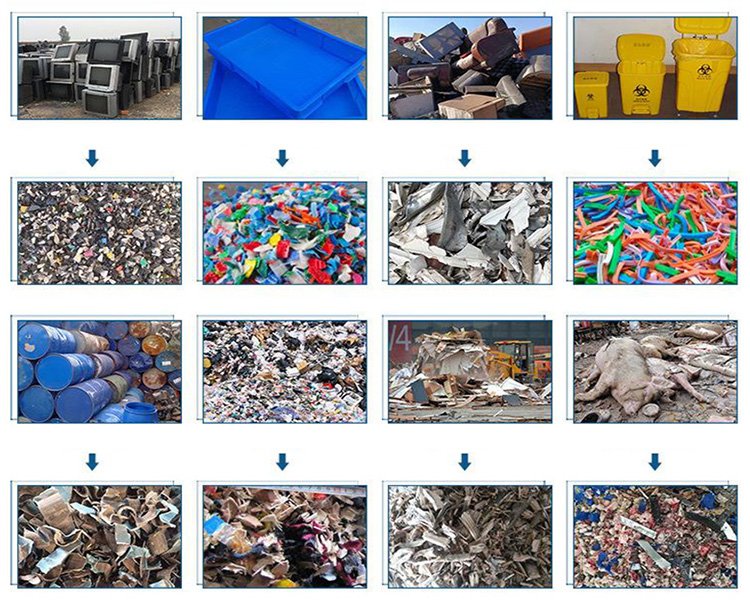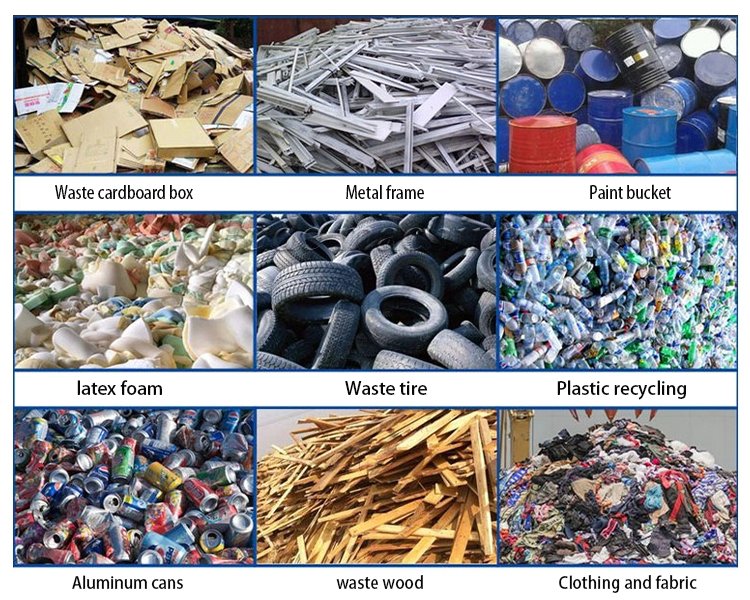Detailed introduction and characteristics of horizontal packing machine
608Horizontal baler is a compression and packaging equipment mainly used for various loose materials such as waste paper, cardboard boxes, straw, etc.
View detailsSearch the whole station
Choosing the right plastic shredder machine for your business is a major decision. This machine is the workhorse of your recycling line and a significant capital investment. Making the wrong choice leads to inefficiency and lost profits. We are Fude Machinery, a direct manufacturer of this equipment. We want to make this process easier for you. This guide will walk you through the key steps to selecting the perfect shredder.
The most important step is to deeply understand your input material. Just saying “plastic” is not enough. The type, shape, and condition of your plastic waste will determine the best type of industrial plastic shredder for your business. A machine that shreds film bales will struggle with hard plastic lumps, and vice-versa.


As a manufacturer, the first thing our engineers ask is “What exactly are you processing?” This is because we need to match the machine’s design—from the blades to the motor—to your material. Being precise here will save you thousands of dollars and prevent major operational headaches down the road. Let’s break it down.
Material Hardness and Thickness
Is your material hard and thick, or soft and thin?
Material Shape and Size
What form does your material come in?
Contamination Level
How clean is your material?

After your material, you need to clearly define your production goals. This comes down to two questions: How much material do you need to process per hour? And what size do you want the output pieces to be? The answers will directly determine the physical size and power of your machine.
At Fude Machinery, we help you think about this realistically. Many businesses underestimate their future needs. It is often wiser to invest in a machine with slightly more capacity than you need today. This allows you to grow your business without needing to buy a new machine in just a few years. An undersized machine will constantly be a bottleneck in your operation.
This is one of the most common questions we get, and the choice is critical. While both are powerful machines, they work differently and are suited for different jobs. Understanding this difference is key to making the right investment.
A single-shaft shredder uses one rotor with cutting teeth that works against stationary blades, with a hydraulic ram pushing material into the rotor. A double-shaft shredder uses two counter-rotating shafts with interlocking cutting discs to pull in and tear material apart.
| Feature | Single-Shaft Shredder | Double-Shaft Shredder | The Right Choice For Your Business |
|---|---|---|---|
| Best For | Uniform output, less bulky materials | Maximum power, bulky & tough materials | Choose double-shaft for raw power; single-shaft for control. |
| Action | Cutting and sizing | Tearing and ripping | A single-shaft is like a controlled cut; a double-shaft is brute force. |
| Output Size | Consistent, controlled by a screen | Less consistent, determined by blade width | If final size is critical, a single-shaft is a better first choice. |
| Contamination | Less tolerant of metal/stones | Highly tolerant of some contamination | For dirty material streams, the double-shaft is safer. |
| Footprint | Often more compact | Larger and heavier for the same capacity | Factor in your available factory space. |

A shredder does not work in isolation. It is part of a process. A smart buyer thinks about the entire production line. How will you get material into the shredder? How will you get the shredded material out? How will you remove metal contaminants to protect downstream equipment?
This is where working with a full-service manufacturer like Fude Machinery becomes a huge advantage. Because we produce the complete plastic washing and recycling lines, we can design a seamless system for you. We provide:
By planning the entire system from the start, you create a more efficient, automated, and safer operation. This one-stop-shop approach simplifies your purchase and guarantees that all components are perfectly matched and work together flawlessly.

1. How much does an industrial plastic shredder cost?
The price varies significantly based on size, type (single vs. double-shaft), motor power, and customization. A smaller shredder might start around $10,000 USD, while large, high-capacity industrial systems can be over $100,000 USD. The best way to get an accurate price is to contact us with your specific requirements for a factory-direct quote.
2. Can I shred mixed plastics together?
You can, but it is not always recommended if you want to sell the final product. A double-shaft shredder is very good at reducing the volume of mixed plastics. However, for high-value recycling, it is usually better to sort the plastics by type before processing.
3. What is the main maintenance cost for a shredder?
The primary maintenance costs are electricity and blade replacement/sharpening. Investing in a machine with high-quality blades made from hardened steel will significantly reduce how often you need to service them, saving you money in the long run.
4. Can I see one of your machines running before I buy it?
Absolutely. We welcome clients to visit our factory in Zhengzhou. If you cannot travel, we can arrange a live video call to show you a machine in our workshop or even perform a test run with your own sample materials.
Choosing the right plastic shredder machine is a straightforward process when you follow these logical steps. Start by analyzing your material in detail. Then, define your capacity and output goals. This will lead you to a clear choice between a single-shaft or double-shaft model. Finally, remember to plan for the entire system, not just the individual machine.
The best way to ensure you make the right choice is to partner with an experienced, factory-direct manufacturer. We can guide you through each of these steps and build a machine that is a perfect, long-term asset for your business.
Ready to select the perfect shredder for your operation?
Let’s do it together. Contact the Fude Machinery engineering team today. Provide us with your project details, and we will create a professional technical recommendation and a transparent, factory-direct quotation to get you started.
Contact Fude Machinery for your expert consultation!
Horizontal baler is a compression and packaging equipment mainly used for various loose materials such as waste paper, cardboard boxes, straw, etc.
View detailsThe Importance of Scheduled Waste ManagementTop Scheduled Waste Management Methods in 2026Fudemetalcrusher Solid Waste Shredder OverviewModel & Capacity Breakdown:Benefits of Scheduled Waste ManagementFuture Trends and Innovations In 2026, a...
View detailsWhat Does Each Machine in the System Do?Why is a Crusher + Cold Press System the Smartest Choice?1. You Achieve Maximum Efficiency2. You Can Process All Foam Shapes and Sizes3. You Get Better, Denser BlocksWhat Makes a Quality, Industrial-Grade Sy...
View detailsOverview of Shredder Scrap Prices in 2026Detailed Shredder Scrap Prices Chart (2026)Key Factors Influencing Scrap Prices1. Global Steel Production and Demand2. Energy Prices and Transportation Costs3. Environmental Policies and Carbon Taxes4. Exch...
View details